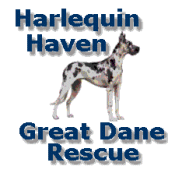|
Anal Gland
The anal glands have no known function in the modern world. They
are "vestigial" organs (like your appendix) meaning that they
once had a function but as the dog evolved, the anal glands lost that function.
The best theory is that dogs once used the very
pungent smelling anal gland secretion to mark their territories in the wild.
Wolves and other wild cousins of the dog are known to do
this. Also, dogs will occasionally express (meaning to squeeze secretion out)
their anal glands when they are frightened, so it is
thought the secretion may have been a defensive repellent (like a skunk).
Dogs use it primarily for territorial marking or as a form of communication.
In dogs, every time a stool is passed, it should put enough pressure on the
anal glands that some of the
secretion is deposited on the surface of the stool. Other dogs are then able to
tell who has been in the neighborhood, just by
sniffing the stools they find. Additionally, dogs recognize each other
by smelling each other in the general area of the anus,
since each animal's anal glands produce a unique scent.
As the dog viewed from behind, anal glands are located on each side of and
slightly below the anal opening, at the 4 o'clock and 8 o'clock positions.
A tiny duct or tube leads under the skin to an
opening directly beside the anus.
Anal Glad Problems
Anal gland impactions, infections and abscesses are very common.
For various reasons, such as the conformation of the animals, the
thickness of the gland's secretions or the softness of the stool,
these glands and their ducts often become clogged, or impacted. When
this occurs, the animal will sit down on its rear quarters and drag
its butt across the floor or ground. This is called scooting.
Dogs may lick the anal area excessively. Impacted anal glands are a
very common problem for a lot of dogs, especially the
smaller breeds.
The problem is that dogs may injure the anal area when scooting across the ground,
or discharge the secretion on the carpet or floor.
And this material has a terrible odor.
Anal glands may also become infected and abscess.
Bacteria make their way into the glands, probably through the ducts. This is a very
painful condition. The first sign you may see is that the animal
cries when you touch the area near the tail, or when attempting to
defecate.
Contributing Factors
The main factors which predispose our dogs to have problems are: (1) small body size and (2) obesity.
Dogs under 20 lbs. have a higher
incidence of anal gland problems than larger dogs. The smaller the dog is,
the more chance of anal gland problems. Teacup poodles,
Chihuahuas, and Pomeranians have an unusually high incidence of impaction.
As with all generalities, of course, we will see
exceptions with many small dogs never having any anal gland problems and
some large dogs occasionally having severe problems. Overweight
dogs can have a mechanical problem with getting the glands to express
well.
Treatment and Prevention
When the glands become impacted, they must be cleaned out, or expressed.
Dog owners can do this themselves, especially after being shown how.
This empties the glands of all material. It is done by
applying pressure with the finger, starting behind the gland and
then pushing outwards. In some dogs this may need to be done every week or
two.
Anal gland abscesses require surgical treatment, and antibiotics
are usually given to the
dog. Using warm compresses on the area often helps to relieve some
of the pain and reduce swelling.
If an individual dog only has an occasional problem with the gland,
they can be dealt with as needed. For
dogs with repeated or chronic problems, surgical removal of the
glands may be recommended.
Although removal is a fairly straight- forward procedure,
complications such as fecal incontinence can rarely occur.
Dogs with recurrent anal gland impactions are often placed on a high fiber diet.
The high fiber makes the animal's stool more bulky. The stool will put more
pressure on the anal glands and hopefully the
glands will express themselves when the dog defecates.
All images and text on this site Copyright © 1998-2025 Harlequin Haven Great Dane Rescue, Inc. unless otherwise credited. Use of any image or text without written permission is expressly forbidden. All rights reserved.
|
|
|
